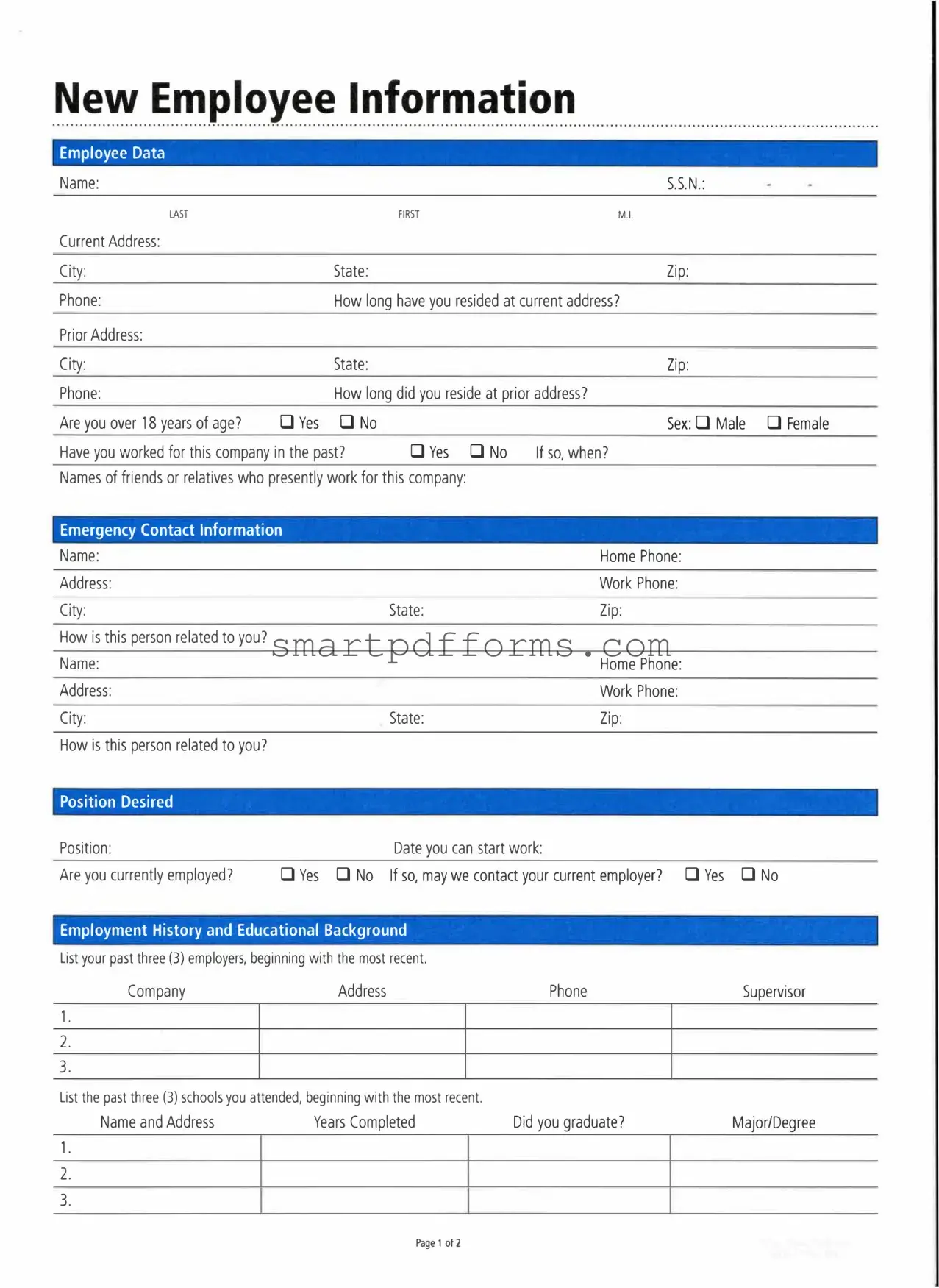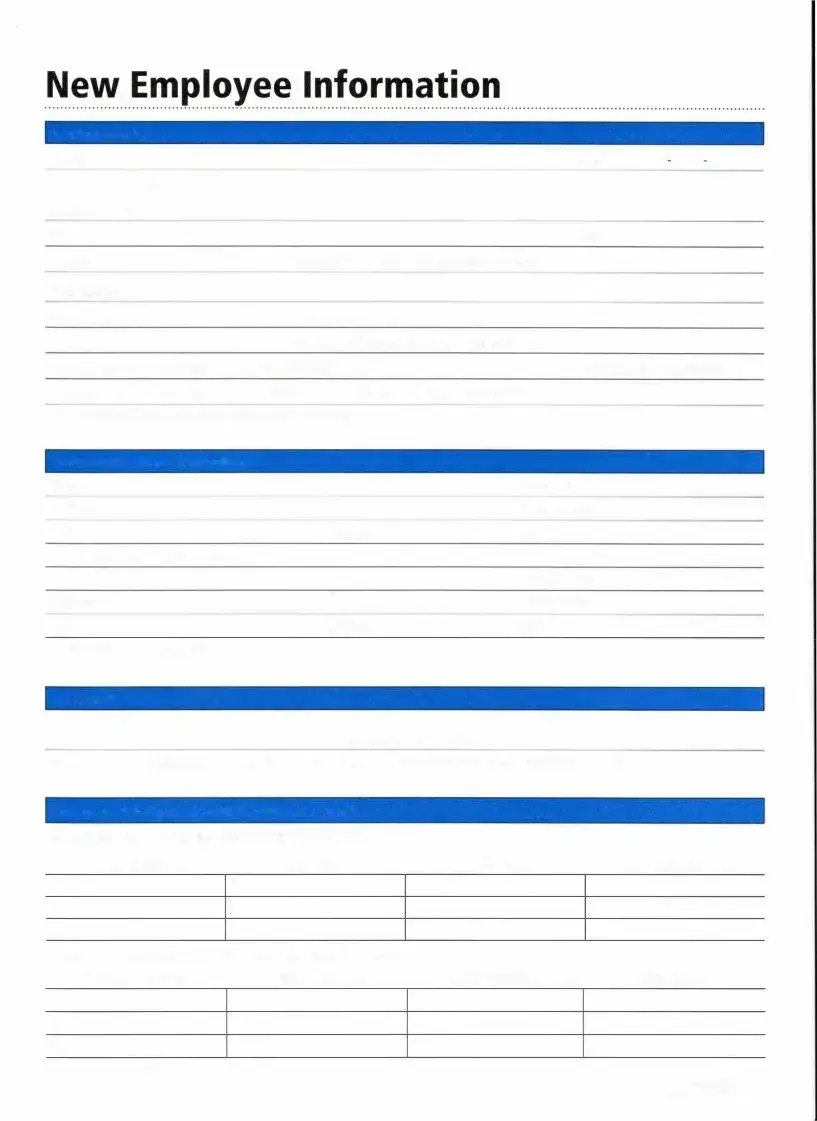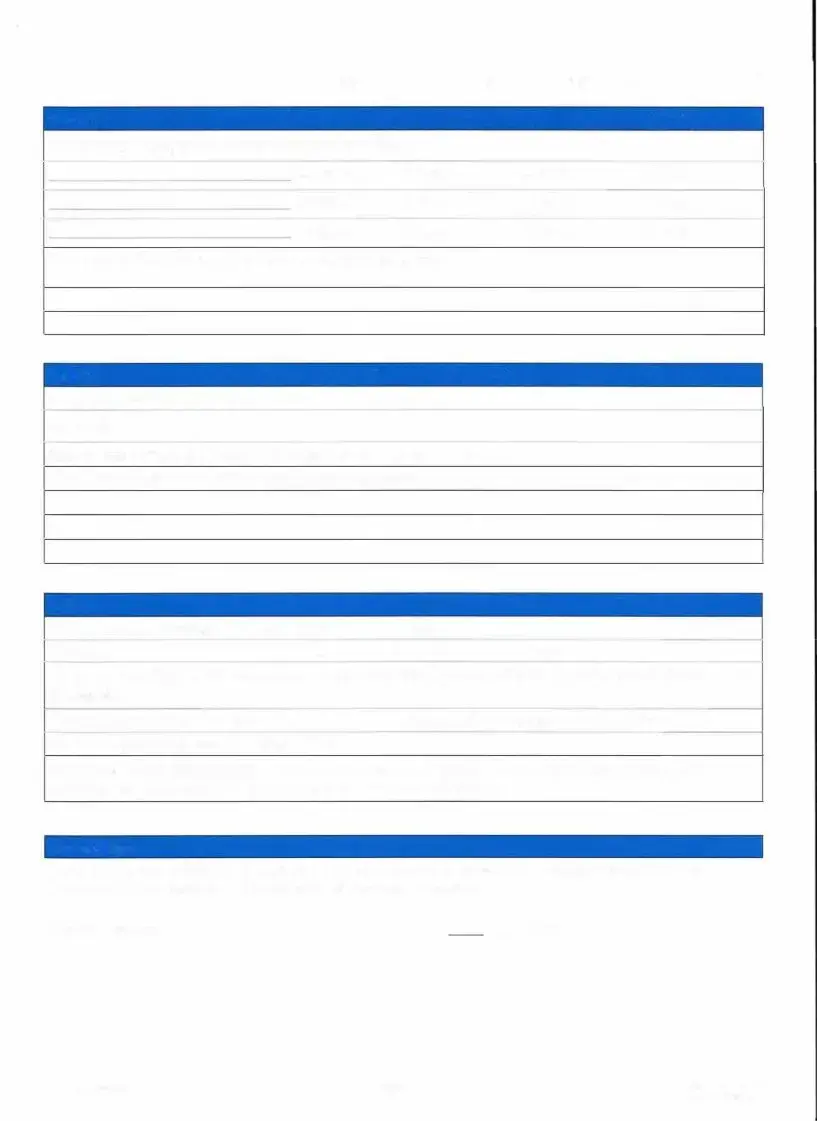At the core of the hiring process, the Employee Information Form plays a pivotal role in gathering essential details about individuals joining an organization. This comprehensive document captures a vast array of personal and professional information ranging from basic contact details, such as name, address, and social security number, to more detailed questions about residency duration, age, gender, and previous employment history with the company. Its scope extends to include emergency contacts, signaling the employer's attention to employee welfare beyond the workplace. Furthermore, it requests specifics about the position applied for, availability, current employment status, and whether the applicant's current employer can be contacted, providing a snapshot of the applicant's immediate professional landscape. Educational background and employment history sections delve deeper, charting the applicant's journey through past engagements and academic achievements, while a section on skills, languages, and other special abilities offers space for highlighting unique competencies. The form also touches on sensitive areas such as legal history, military service, and the need for potential accommodations, ensuring comprehensive insights into the candidate's background and needs. Lastly, a declaration seeks to ensure the authenticity of the information provided, with the applicant's signature sealing the commitment to honesty and accuracy. This carefully structured form thus serves as a foundational tool in forging transparent and informed employment relationships, ensuring both parties embark on their mutual engagement with clarity and understanding.


